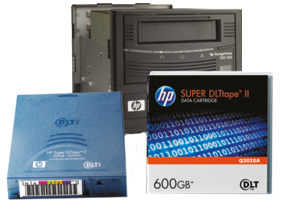Tape migration

In the last decade, development in the computer industry took place at breakneck speed.
Against this background, it is not surprising that the lack of communication capability among computer systems is an ever-present problem. Even if the same drive is installed in two systems, this does not mean that you can read tapes written with the other system on one system.
Migration of complete computer systems is one of the most complex challenges for an IT department. When older data sets and software applications are no longer supported, it is necessary to convert all archived data to new more modern formats. Regular conversions are essential for consistent data and permanent data availability.
In the event that older backup or tape systems are no longer supported, it becomes necessary to migrate archived data to newer, up-to-date systems in order to ensure the seamless availability of data.
However, migration today is an ongoing issue that needs to be carefully planned and controlled. The migration of systems, applications and data does not only become acute during an archive replacement, but already begins with the introduction of an archiving solution.
Reasons for migration:
- For business combinations and acquisitions
- In case of compatibility problems of systems
- Hardware and software are outdated, ineffective and at the edge of capacity.
- Hardware and software maintenance on the part of the manufacturers was discontinued
- When upgrading operating systems, servers and software
- When converting from tape archives to hard disk archives or online storage
- The ability to integrate into modern IT landscapes is no longer given

